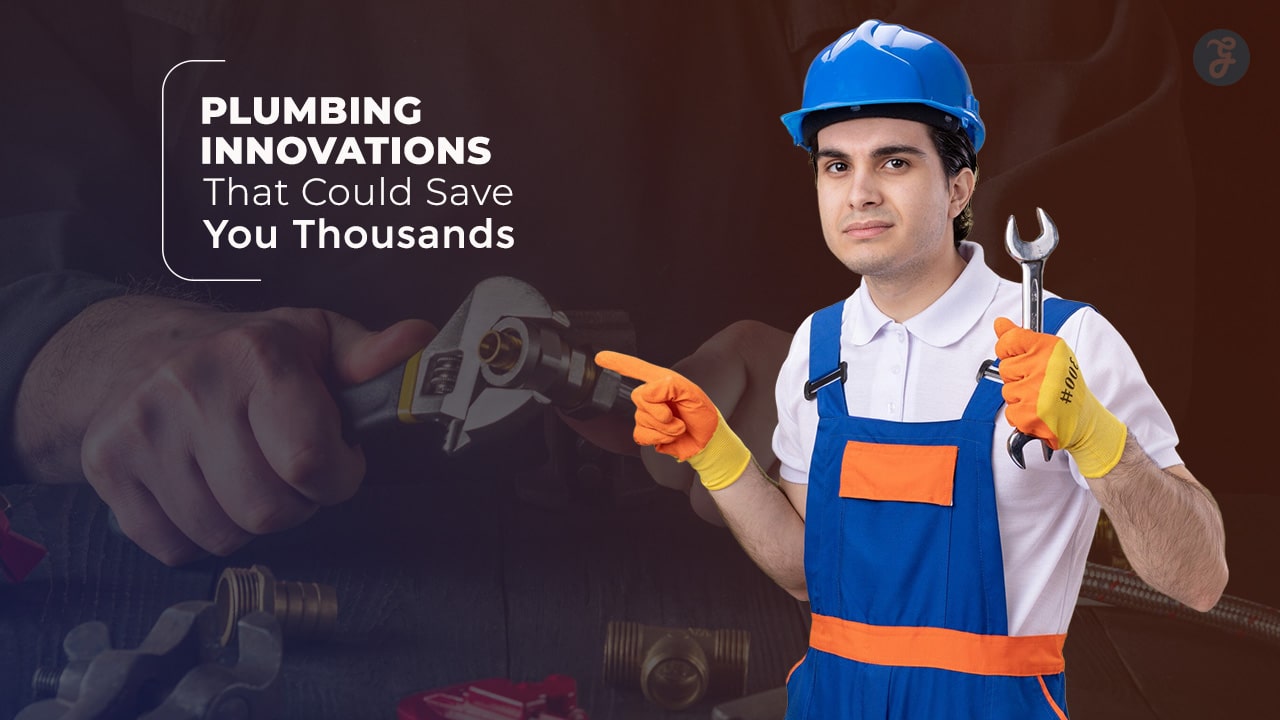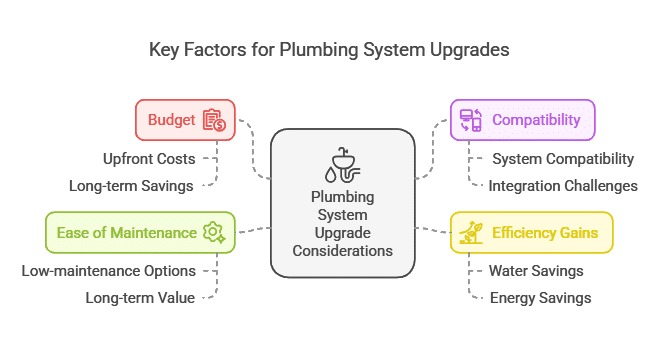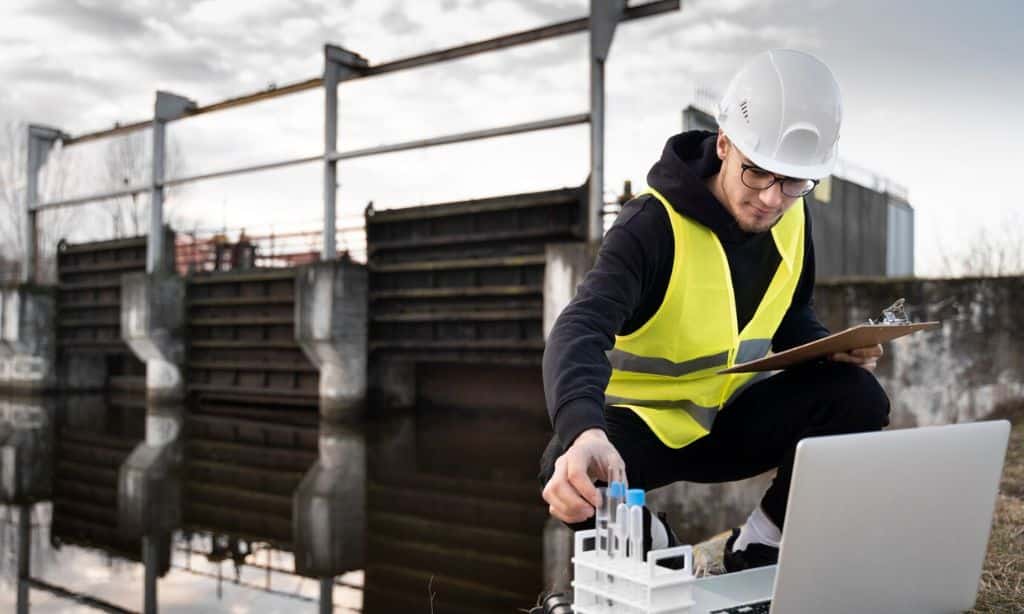Plumbing issues can be one of the most expensive and frustrating problems homeowners face. Leaky pipes, inefficient water usage, and outdated plumbing fixtures can all lead to skyrocketing utility bills and costly repairs.
Fortunately, new plumbing innovations that could save you thousands are changing the game.
From smart leak detection systems to tankless water heaters, these technological advancements help homeowners cut costs, conserve resources, and enhance overall efficiency.
This guide will explore the top plumbing innovations that could save you thousands, explaining how each works, its benefits, and how it can help you reduce water waste and expensive repairs. Whether you’re looking to upgrade your home’s plumbing system or simply reduce your utility bills, these solutions are worth considering.
Why Modern Plumbing Innovations Matter?
Plumbing repairs can be costly, especially when issues go undetected for long periods. Water damage from leaks can result in thousands of dollars in structural damage, while outdated systems often require expensive repairs and replacements.
According to HomeAdvisor, the average cost of major plumbing repairs ranges from $500 to $2,500, with some cases exceeding $10,000 for extensive water damage. The good news is that modern plumbing innovations that could save you thousands can significantly reduce these expenses.
How Smart Plumbing Technology Enhances Efficiency?
Smart plumbing technology integrates automated systems, real-time monitoring, and water-saving features to optimize home plumbing. Innovations such as smart water meters, touchless faucets, and tankless water heaters reduce waste and improve efficiency, ultimately lowering costs.
Recent studies indicate that smart leak detection devices alone can prevent nearly 93% of water-related damages in homes.
Key Factors to Consider Before Upgrading Plumbing Systems
Before investing in plumbing innovations that could save you thousands, consider:
- Budget: Upfront costs vs. long-term savings
- Compatibility: Ensuring new systems work with existing plumbing
- Efficiency Gains: Potential savings on water and energy bills
- Ease of Maintenance: Choosing low-maintenance options for long-term value
Plumbing Innovations That Could Save You Thousands
As technology advances, so do home plumbing solutions, offering smarter, more efficient, and cost-effective alternatives to traditional systems. Whether you’re dealing with persistent leaks, outdated fixtures, or high utility bills, modern plumbing innovations provide practical ways to optimize water usage and prevent costly repairs.
Below, we explore some of the most impactful innovations that could significantly cut down your plumbing expenses.
1. Smart Leak Detection Systems
How They Work
Smart leak detection systems monitor your plumbing in real-time and send alerts to your phone if a leak is detected. These devices can automatically shut off the water supply, preventing costly damage. They use AI algorithms to analyze water usage and identify anomalies before they become major issues.
Benefits
- Prevents structural damage from hidden leaks
- Saves thousands in water damage repairs
- Provides remote monitoring and instant alerts
- Enhances home insurance eligibility and discounts
Case Study
A homeowner in California installed a smart leak detector and prevented a major basement flood, saving nearly $15,000 in potential repairs. The device identified a slow leak in the foundation pipe and automatically shut off the water before significant damage occurred.
Top Smart Leak Detectors
| Brand | Features | Price Range |
| Flo by Moen | Auto shut-off, app alerts | $400-$500 |
| Phyn Plus | AI-driven monitoring, water usage analysis | $700-$800 |
| LeakSmart | Whole-home protection, sensor-based alerts | $300-$400 |
2. Tankless Water Heaters
How They Work
Unlike traditional water heaters that store hot water, tankless water heaters heat water on demand, reducing energy waste. They use high-efficiency burners or electric elements to quickly heat water as it flows through the unit.
Benefits
- Uses up to 30% less energy than traditional water heaters
- Provides endless hot water supply
- Lasts up to 20 years (longer than conventional heaters)
- Compact design saves space
Cost vs. Savings
| Feature | Traditional Water Heater | Tankless Water Heater |
| Lifespan | 10-15 years | 20+ years |
| Energy Efficiency | 50-60% | 80-98% |
| Monthly Savings | Minimal | $20-$50/month |
3. Water-Efficient Fixtures and Faucets
How They Save Money
Low-flow toilets, faucets, and showerheads use advanced aeration technology to reduce water consumption without compromising pressure.
Benefits
- Cuts water usage by up to 50%
- Lowers utility bills
- Qualifies for government rebates in some areas
- Reduces strain on local water supply systems
Comparison Table
| Fixture Type | Standard Usage | Water-Efficient Usage | Savings (%) |
| Toilet | 3.5-7 gallons per flush | 1.28-1.6 gallons per flush | 50-80% |
| Showerhead | 2.5 GPM | 1.5 GPM | 40% |
| Faucet | 2.2 GPM | 1.0 GPM | 55% |
4. Greywater Recycling Systems
How They Work
Greywater systems recycle water from sinks, showers, and washing machines for non-drinking purposes, such as irrigation and toilet flushing.
Benefits
- Reduces household water waste by up to 40%
- Lowers water bills significantly
- Supports sustainable living
- Minimizes wastewater treatment costs
Example
A study by the EPA found that a typical household using a greywater system can save up to 10,000 gallons of water annually, significantly reducing utility costs.
5. Smart Irrigation Systems
How They Optimize Water Usage
Smart irrigation systems use sensors and weather data to adjust watering schedules, reducing waste.
Benefits
- Prevents overwatering
- Lowers water bills
- Ideal for homeowners with large gardens
- Increases landscape health and sustainability
Key Features Table
| Feature | Benefit |
| Soil Moisture Sensors | Prevents unnecessary watering |
| Weather-Based Adjustments | Adapts to real-time climate data |
| App Connectivity | Remote control from smartphone |
6. PEX Piping Systems
How They Work
PEX (cross-linked polyethylene) piping is a flexible and durable alternative to traditional copper or PVC pipes. It resists corrosion, adapts to temperature changes, and is easier to install.
Benefits
- Reduces installation time and labor costs
- Resistant to freezing and bursting
- More affordable than copper piping
- Flexible and adaptable for different plumbing layouts
Comparison Table
| Feature | Copper Pipes | PEX Pipes |
| Cost | Expensive | Affordable |
| Flexibility | Rigid | Highly flexible |
| Corrosion Resistance | Can corrode over time | Corrosion-resistant |
| Installation | Labor-intensive | Quick and easy |
7. High-Efficiency Water Softeners
How They Work
High-efficiency water softeners use advanced ion-exchange technology to remove hard minerals from water, reducing scale buildup in pipes and appliances.
Benefits
- Extends the lifespan of plumbing fixtures
- Reduces soap and detergent use
- Prevents mineral deposits in pipes
- Lowers energy costs by improving appliance efficiency
Example
A homeowner in Arizona reduced their appliance repairs by 40% after installing a high-efficiency water softener, saving over $2,000 in maintenance costs over five years.
8. Touchless Faucets and Smart Valves
How They Work
Touchless faucets use motion sensors to control water flow, reducing waste. Smart valves automatically shut off water in case of leaks.
Benefits
- Conserves water by eliminating unnecessary usage
- Reduces the spread of germs and bacteria
- Enhances kitchen and bathroom hygiene
- Ideal for both residential and commercial use
Cost vs. Savings
| Feature | Standard Faucets | Touchless Faucets |
| Water Usage | Higher due to manual control | Lower due to automatic shut-off |
| Hygiene | Requires hand contact | Hands-free operation |
| Energy Savings | None | Significant reduction in wasted water |
9. Advanced Drain Cleaning Technologies
How They Work
New drain cleaning techniques, such as hydro-jetting, use high-pressure water to clear blockages and buildup without harsh chemicals.
Benefits
- More effective than traditional drain snaking
- Prevents costly pipe damage and blockages
- Environmentally friendly alternative to chemical cleaners
- Long-term prevention of drain issues
Key Features Table
| Feature | Traditional Drain Cleaning | Hydro-Jetting |
| Effectiveness | Temporary solution | Long-lasting results |
| Pipe Damage Risk | High with frequent use | Low, uses only water |
| Chemical Use | Often required | Chemical-free |
10. Smart Water Meters
How They Work
Smart water meters track real-time water consumption and detect leaks, helping homeowners manage usage and reduce waste.
Benefits
- Provides detailed water usage reports
- Prevents excessive water bills
- Detects hidden leaks before they cause major damage
- Helps municipalities and homeowners manage water conservation efforts
Example
A homeowner in New York City reduced their water bill by 30% after installing a smart water meter, identifying inefficiencies and making necessary adjustments.
Final Thoughts on Cost-Saving Plumbing Innovations
Plumbing innovations that could save you thousands are not just about convenience—they also provide significant financial and environmental benefits.
By investing in smart leak detection, water-efficient fixtures, and energy-saving heating solutions, homeowners can drastically cut costs and prevent expensive plumbing disasters.
Are you ready to upgrade your home’s plumbing? Consider consulting a professional to explore the best solutions tailored to your needs. The right innovations can transform your home’s plumbing efficiency, saving you money for years to come.









































